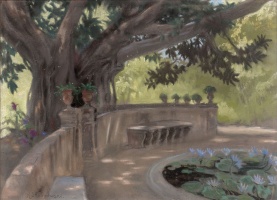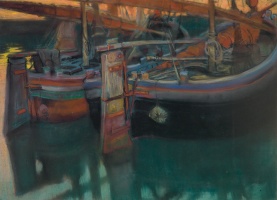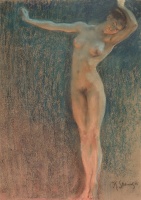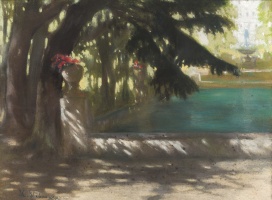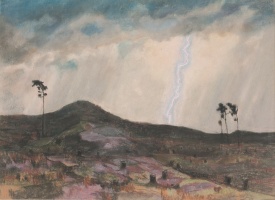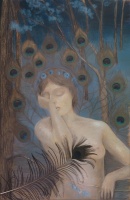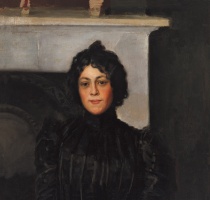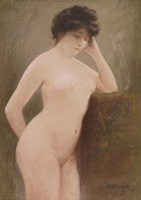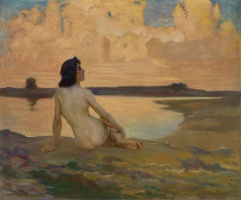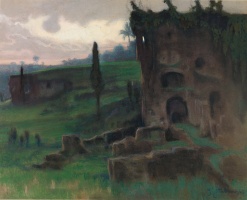
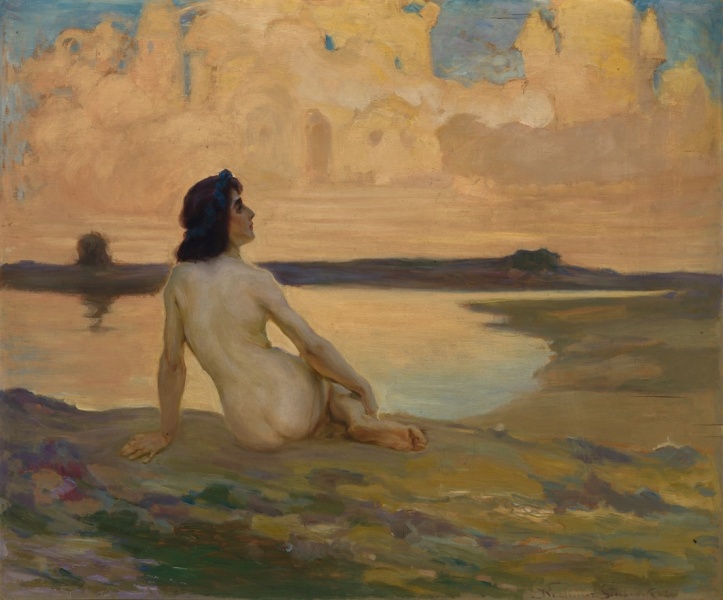

The palace of gold
| Author: |
Kazimierz Stabrowski (1869–1929)  |
| Created: | 1912 |
| Material: | hardboard |
| Technique: | oil |
| Dimensions: | 92 × 110 cm |
| Signature: | bottom right: Kazimierz Stabrowski |
When Laima Laučkaitė was researching Symbolism in Lithuanian art and trying to identify what distinguished the work of Stabrowski from the work of Čiurlionis, she defined it as the difference between the teacher and the student, describing the two artists as Symbolists of the first and second generations. According to her, Stabrowski remained faithful to realistic representation, and created romantic allegories which appealed even to conservative viewers and critics (L. Laučkaitė, Vilniaus dailė XX a. pradžioje, Vilnius, 2002, p. 150). His painting The palace of gold is a typical example of Central and East European Symbolism. It intrigues us by showing a parallel between a woman’s nude body and the fanciful shapes of clouds, thereby making literary associations, and opening up vast territories to the imagination.
Text author Giedrė Jankevičiūtė
Source: Law firm Valiunas Ellex art album MORE THAN JUST BEAUTY (2012). Compiler and author Giedrė Jankevičiūtė, RES PUBLICA (2018). Compiler and author Rūta JanonienėExpositions: “More Than Just Beauty: The Image of Woman in the LAWIN collection”, 12 October – 11 November 2012, National Gallery of Art, Vilnius; “Kazimieras Stabrauskas – M. K. Čiurlionis teacher”, 24 September – 6 January 2015, National M. K. Čiurlionis Art Museum, Kaunas; International Exhibition “The Times and Works of Leon Bakst”, 10 February – 17 April 2016, National Art Museum of the Republic of Belarus, Minsk; 19 April – 26 June 2016, Vilnius Picture Gallery, Vilnius; “The Break of Dawn. Lithuanian Visual Arts prior to 1918”, 10 May – 31 May 2019, M. K. Čiurlionis National Museum of Art (V. Putvinskio St. 55, Kaunas)








